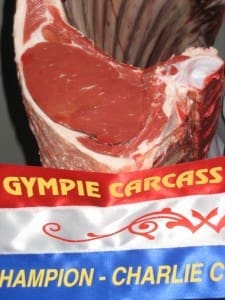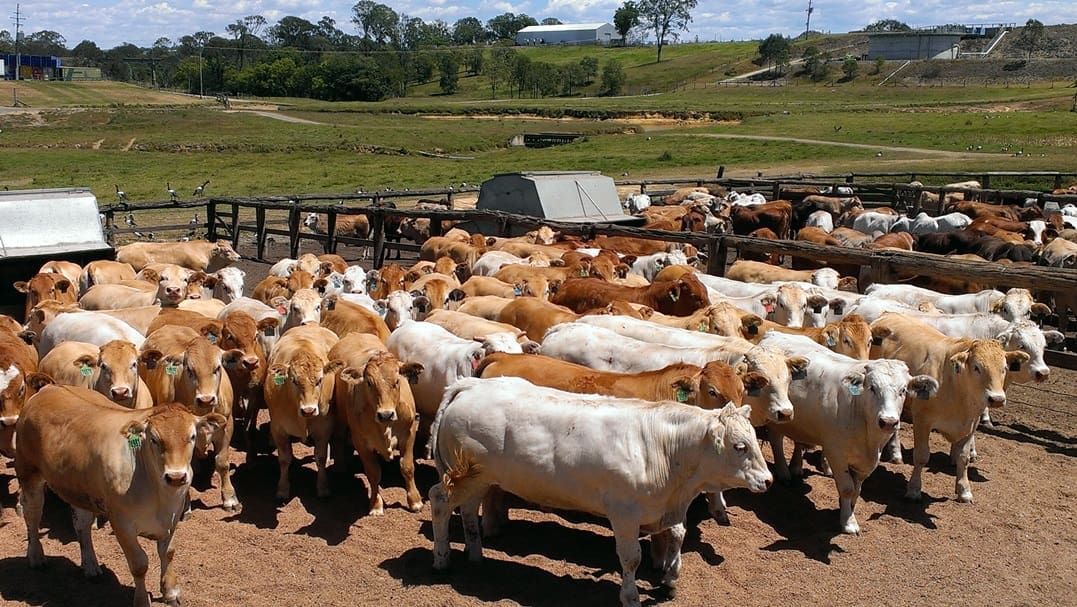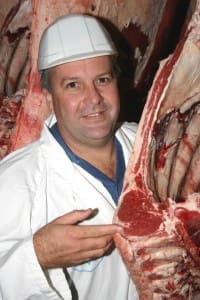WITH Christmas party season fast approaching, Brisbane steak lovers will get an opportunity to sample a beef breed which rarely, if ever makes an appearance on steakhouse menus – in purebred form at least.
During December, Brisbane’s famous Breakfast Creek Hotel steakhouse will feature beef from purebred Blonde d’Aquitaine cattle, an opportunity which has come about only due to the unfortunate effects of this year’s drought.
Nolan Meats co-principal and former Australian Meat Industry Council chairman, Terry Nolan has had a fancy for Blonde cattle for decades, and he maintains a herd of purebreds for herd bull production. In fact the Nolan family runs the largest purebred Blonde herd in Australia.
The European breed is primary used in terminal crossbreeding programs over complementary maternal genetics, but the drought has forced Terry and family to place a large mob of purebred steers and heifers from the herd on feed at Nolan’s Wide Bay feedlot for processing, as paddock feed ran out and hay costs became prohibitive.
The result will be a rare, if not unprecedented offering anywhere in Australia, of a large volume of purebred Blonde steak cuts in coming weeks. A sizeable chunk will feature on the menu at the Brekky Creek, where Nolan Meats’ regular beef has featured for ten years or more.
Nolan Meats at Gympie has processed and aged a total of one tonne of cube rolls, 1.6 tonnes of rump and 2.4 tonnes of T-bones from the Blonde cattle, for the Breakfast Creek promotion. That sounds a lot, but with a one-time seating capacity of 1000, the Brekky Creek is the largest steakhouse in Australia, and gets through a ‘ship-load’ of meat each month.
The beef was tenderstretched, graded under MSA, and has aged for seven weeks since slaughter, guaranteeing its tenderness. Most of the steers were 10 to 14 months of age at slaughter, averaging around 260kg carcase weight, after a tough start in the paddock. Some had massive eye muscle areas, characteristic of the breed, ranging up to 120sq cm, and marbling scores up to 3, after 200 days on feed.
“What patrons will notice about the beef is the fresh, almost crisp flavour, as the finely textured meat breaks down in your mouth, a unique mouth feel,” Terry said.
While the relatively obscure breed may not be familiar to steak lovers, it has to be said Blonde steers and heifers – often three quarters to purebred in breed content – have featured among the winners in the prestigious annual Gympie Carcase Classic with monotonous regularity over the past 25 years.
Here’s a picture of Terry from years gone by, with one of his early competition winners.
The beef featuring at the Brekky Creek is from the same herd that also provided the winners in both the export and heavy trade carcase classes in Australia’s only truly National Carcase Competition at Beef 2012 in Rockhampton.
Carcase data captured from the recent turnoff has also been submitted for the Beef 2015 National Carcase Competition event, due to be announced in May next year.
The Brekky Creek regularly features 14 different grassfed and grainfed wet and dry-aged steaks, but the December ‘Blonde on Blonde’ steak feature will offer something different again, and an offer unlikely ever to be repeated. The cheekily-named  promotion will team Terry’s beef with Blonde beer, in a joint promotion.
promotion will team Terry’s beef with Blonde beer, in a joint promotion.
Blondes are the third most numerous breed in France, but are said to produce France’s most highly-prized beef for discerning French consumers.
“Some people buy a boat or a share in a racehorse, but I find great enjoyment in Blondes – of the four-hoofed variety,” Terry said.
While Beef Central goes to considerable lengths to avoid publishing excruciating beef breed propaganda, we thought it appropriate to share some of Terry’s thoughts on Blonde cattle here.
“There’s a lot to like about the cattle, from the light coats that make them so heat-tolerant and ideal for the tropical Queensland environment, to the fast growth, achieving high weights at a young age,” he said.
“They’re so economical for butchers with their high meat-to-bone ratio, and so lean for the health-conscious consumer with so little subcutaneous fat. So lean, so tender,” he said.
“The beef is low in fat and best eaten rare to medium-rare – unless, of course, you are French and like it blue.”
- The Brekky Creek’s Blonde on Blonde promotion starts today, December 1, and will continue through to New Year, or until supply is exhausted. For bookings phone 07 3262 5988, email breakfast.hotel@alhgroup.com.au


